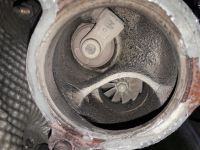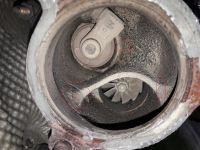Hello all. I know there were similar topics but no concrete solutions. Yesterday, in my Passat b5 1.8 T AEB, I replaced the entire exhaust system, including the catalyst, and replaced it with a replacement.
After this treatment, the turbine began to turn red. This was not the case before. After a harder ride, it glows red, and after a quiet ride on the 110 - 120 km route, it is also a bit red. After replacing the kata, the car has not gained much strength, it is a bit more lively. I don't like that turbine turning red, I'm afraid I'll finish it soon. Have any of you anyway? Maybe you solved the problem somehow. Nor does he want to spend a fortune replacing everything one by one, which sometimes won't work. greetings
After this treatment, the turbine began to turn red. This was not the case before. After a harder ride, it glows red, and after a quiet ride on the 110 - 120 km route, it is also a bit red. After replacing the kata, the car has not gained much strength, it is a bit more lively. I don't like that turbine turning red, I'm afraid I'll finish it soon. Have any of you anyway? Maybe you solved the problem somehow. Nor does he want to spend a fortune replacing everything one by one, which sometimes won't work. greetings





